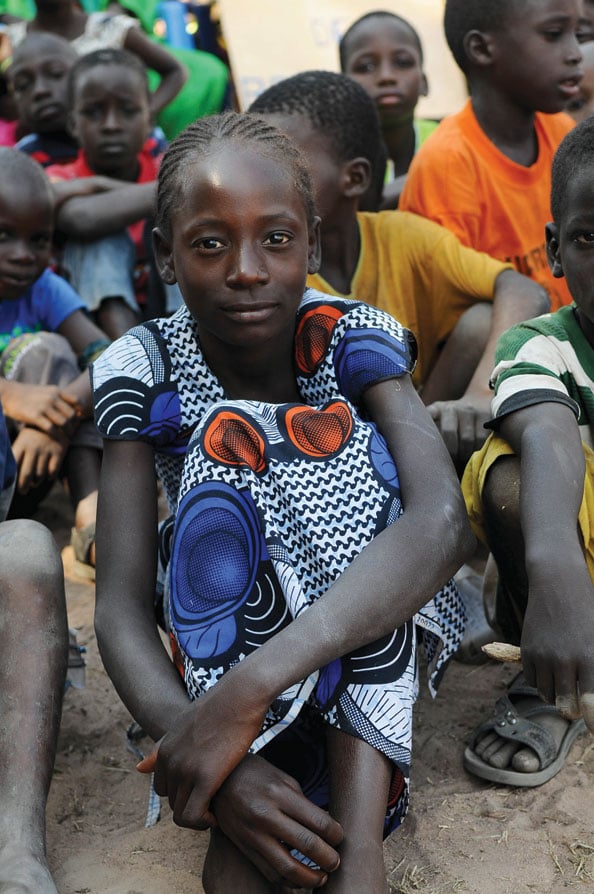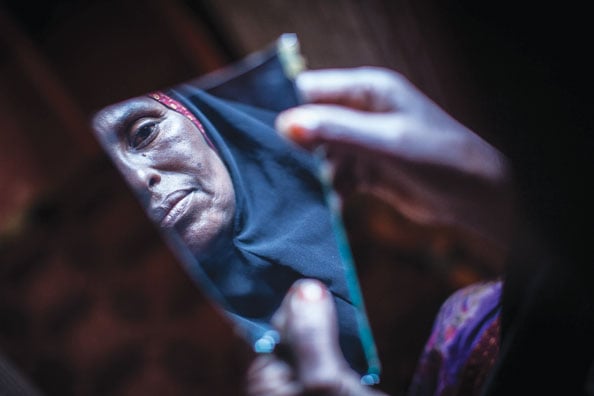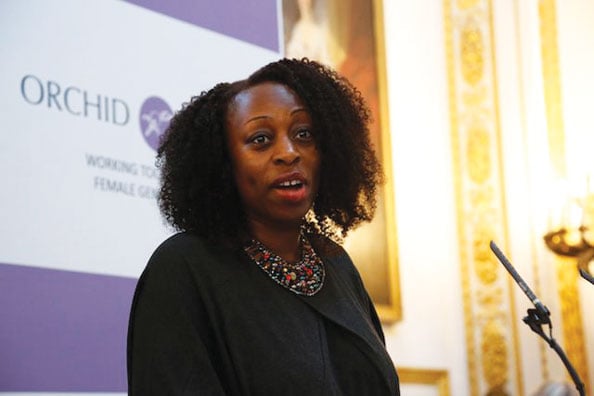Emirates Woman investigates the culturally sensitive issue of female genital mutilation, and asks what is being done to put an end to this practice in the Middle East.
The preparations have been made. In a makeshift clinic in an old school hall, tables dressed with sheets and pillows serve as hospital beds. This isn’t a blood donation centre, or the latest round of vaccinations for schoolchildren. It’s a clinic in Indonesia where girls are taken to be circumcised. The coming-of-age practice is performed in many countries across the world. For some, it’s perceived as tradition, for others beautification, and many believe it’s intertwined with religious beliefs. According to official bodies such as the United Nations and the World Health Organisation, it’s a human rights violation broadly described as female genital mutilation (FGM), or cutting.
More than 140 million girls worldwide are subjected to FGM, which involves the partial or total removal of external female genitalia. Although many think that this is a practice localised to areas of Africa, it’s actually performed in countries across the Middle East, and Asia, as well as parts of Europe and America. “Cutting is thought to have originated in the Nubia region of the Horn of Africa – now Egypt and Sudan,” explains Chief Executive and Founder of The Orchid Project, Julia Lalla-Maharajh. “Some ancient mummies possess markings that indicate the practice. According to some historical accounts, the practice began when one Pharaoh cut his harem of women in order to control them. When others wanted their daughters to marry into his social group, they cut their daughters too. The practice was passed down into different social strata.”
It’s believed that cutting spread through trade routes, migration and ethnic lines, to become a social norm in certain communities. Although exact figures are hard to come by, it’s estimated that in the likes of Somalia 98 per cent of girls are cut. Outside Africa there has been little research, although experts claim it takes place everywhere from Iraq to Iran, the Philippines and Indonesia.
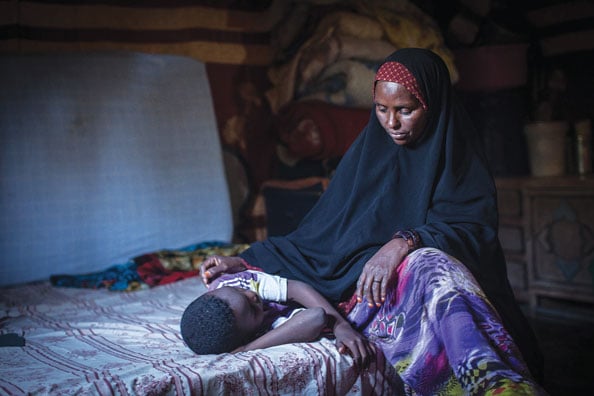
Amran sits with a young girl. She gave up her career as a cutter four years ago
LIFELONG CONSEQUENCES
“The type of cutting varies in different communities,” says Julia. “It ranges from cliterodectomy (removal of the clitoris) to infibulation – which can include complete removal of a girls’ external genitals and sewing together to seal the wound that remains, with a small hole left for menstruation and urination. This obviously leads to lifelong consequences for the girl.” One of the most immediate risks of this more severe form of cutting, also known as Type III, is death.
Dr Soraya Farah, Gynaecologist and Obstetrician at Serenity Clinic in Dubai Healthcare City, has seen patients with various levels of cuts. She points out that the majority of Middle Eastern cases involve Type I or Type II. Women with the most severe form are generally from specific African communities, and in some of these cases the genitalia is left “unrecognisable”. “Trauma from FGM is physical and psychological,” says Dr Soraya. “Circumcised girls are at risk of bleeding, shock, anaemia and infections. In addition [there are] long-term complications such as chronic pain, urine infections and birth complications.”
CLOSER TO HOME
There’s no doubt that cutting is more common in some Middle Eastern countries than others. But it’s a common misconception that female circumcision only takes place in rural villages at the hands of community leaders, barbers and uncertified midwives. In many cosmopolitan towns and cities it’s practiced by medical professionals in clinics, which creates a belief that it’s safe.
Another common belief is that cutting is exclusive to countries where Islam is the prominent religion. This is something that Julia is keen the address. “Cutting takes place in both non-Islamic and Islamic countries,” she explains. “It’s not correct to say that it’s required by Islam; indeed, in many Islamic countries, cutting doesn’t happen at all.”
Hannah Wettig is the project coordinator for Stop FGM Middle East, a campaign by the Iraq-German non-governmental organisation Wadi and the Dutch Hivos organisation. Hannah feels it’s paramount to do further research, rather than rely on stereotypes or speculative information. She points out that until larger studies are carried out across the region, we don’t know the extent of the problem, or if there is one. “In countries that are rapidly modernising, it could be that the trend is fading out,” she says. “But then the trend could be like it is in Malaysia and Indonesia, where the numbers are actually rising.”
TIME FOR CHANGE
While Egypt is often criticised for having an atrocious rate of female circumcision, it’s actually against the law in the country, and heavy prosecutions have been handed down. A 15-year-old schoolgirl, Sohair al-Bata’a, died in June 2013 due to complications following her procedure. The man who cut her, Dr Raslan Fadl, and her father, became the first people in Egypt to be prosecuted for FGM. Although this is a huge step forward, it also gives credibility to claims that cutting is sometimes illegally carried out by qualified doctors, and other trusted professionals.
Worldwide there are varying laws and enforcement levels. In the likes of Ethiopia, Ghana, Kenya and Tanzania, there are penalties ranging from monetary fines to life in prison. European countries such as Denmark, Sweden and the United Kingdom have also passed laws outlawing the procedure, as does the UAE. However, there are still many places where FGM is legal, and many more who have never actually prosecuted a practitioner.
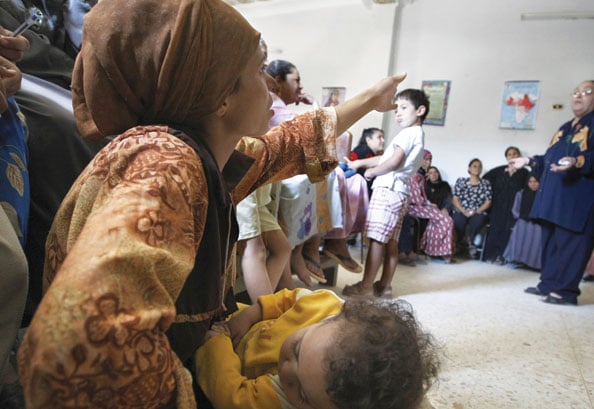
A woman participates in a lecture on FGM in Beni Sueif, a town 130km south of Cairo. Statistics show that more than 95 per cent of the women here have undergone the procedure
Although it’s clear that there are disparities in how different corners of the world deal with cutting on a legal level, merely drawing up legislation isn’t a comprehensive solution. “Laws are a very supportive element,” says Hannah. “But a law itself is not enough. There must be law enforcement.” This is something that Julia agrees with, pointing out that punishing those who injure girls is actually dealing the problem too late – “By the time someone is prosecuted for cutting, the Government in question has already failed in its duty to protect a girl.”
The problem is much more complex than highlighting medical risks and making FGM illegal. Data from Unicef shows that in Sierra Leone, 66 per cent of women aged between 15 and 49 support cutting. In poorer areas, this figure rises to 77 per cent. There are clearly cultural norms that need to be addressed, many of which dictate that a girl is unclean, or more likely to be promiscuous if she is uncut, but often it’s merely viewed as tradition.
Although legislation provides a useful foundation, nothing will change unless attitudes are reformed. Julia explains that the most rigorously evaluated programme is by the Orchid Project’s partners, Tostan. Their approach in Senegal, in partnership with Unicef and the government of Senegal, has helped 7,500 communities stop cutting young girls. This was achieved through education, and teaching communities more about their human rights.
“As cutting is a social norm, it ends with the entire community declaring that they will end it,” says Julia. “This means that the existing social norm shifts to a new social norm – from cutting their daughters to not cutting their daughters.” It can’t be put more simply than that.
Data and information from The Orchid Project, Stop FGM Middle East, Serenity Clinic, Unicef, the United Nations and the World Health Organisation.
Words: Sarah Garden and Lyndsey Steven
“DON’T CALL ME MUTILATED”
Jay Kamara-Frederick was was taken to Sierra Leone to be cut. Here, she tells Emirates Woman about the day she almost died, and why she wants an end to the stigma as well as the procedure
I was cut when I was 15. A few months after my dad died of cancer I went to Sierra Leone to see his grave and join the woman’s society. My understanding was I’d go through a rite of passage, and this was the only way I would be accepted into the society. Unaware of what it entailed I went along with things. It wasn’t until the ceremony started to unfold that I began to think that something strange was about to happen.
I remember the joyous sound of women singing and then the sudden roughness of hands as I was forced to lie down with my legs spread. It was the quickest yet longest moment of my life. Nothing prepared me for the pain. Then it was over and I was left to recuperate for a few days. I nearly died due to the amount of blood loss. I’m often asked how it felt – my response is something I wouldn’t wish on anybody.
Until I was in my twenties, I was very naïve to my body parts and didn’t appreciate what the cutting had done to me. That changed dramatically when I went for my first smear test. I was called “mutilated”. The nurse took great interest, and then a doctor came in to have a look. They took my hand, asked when it happened, told me I was brave and that I should write a book.
I remember leaving the clinic in a bit of a daze. The experience left me feeling embarrassed, ashamed and somewhat violated. I started to research the term ‘female genital mutilation’ and on finding out what it was, my world as I knew it crumbled. Thinking about it brings tears to my eyes. The term female genital mutilation is a derogatory and disempowering term that de-feminises millions of women who haven’t chosen to be part of the cutting practice.
Through my own research I concluded that I had had the type II cut, which I later had verified by a specialist nurse in London. The psychological consequences for me have included an eating disorder, developing OCD, disconnecting from my family and friends, depression, phantom pain, loss of confidence, and negative body image issues. The saddest effect is the years I lost working my way through the dark tunnel. It was a hard but necessary journey for me to embark on, as my end goal was to be the person that God had created me to be. Not the version that I had been adapted into at the hands of both family and society.
What’s important to me is that the violation against women stops. My issue is that women are initiating the practice against their daughters, altering their lives with a total disregard for their human rights. If I had been asked if I wanted to be cut my answer would have been no.
Prevention starts with educating children from an early age about their human rights, specifically about their body and their right to have control over what happens to it. Parents also need to be educated on how best to protect their children against violence to their bodies.
My message to other girls and women who have been cut is that they are much more than their cut – they are beautiful women with so much to bring to the world. What’s helped me has been my obsessive desire to be in complete control of my life. I’m proud to say that I have come through the dark side.
Jay Kamara-Frederick is a marketing consultant, creator of Red Lipstick Day (A movement to support women of courage and strength), a young woman’s mentor and Orchid Project ambassador. She lives in London with her husband and two cats, Sprinkle and Champagne. @jaykamara
JAY’S ADVICE TO FELLOW SURVIVORS
Don’t be afraid to get help. Having therapy has played a huge part in my emotional and mental healing. Although difficult, it was one of the best gifts I could have given myself.
Get to know your body. There are different types of cutting, and with no ‘standard’ to how it is done it’s important you know the type of cut you have had. That way you can preempt any future medical issues that may arise.
Love your body. Despite what my body has been through, I’ve learned to love it. I realise that every woman is unique and while my body has been altered, it’s all mine.
Respect the experience. I’ve met many women who have undergone cutting, and come to realise that many call themselves ‘mutilated’. To have someone adopt that label saddens me, because the term holds so much baggage.
Absolve. Forgive those who have hurt you and do what you can to break the cycle.
As told to Sarah Garden
Images: Getty and Shutterstock











